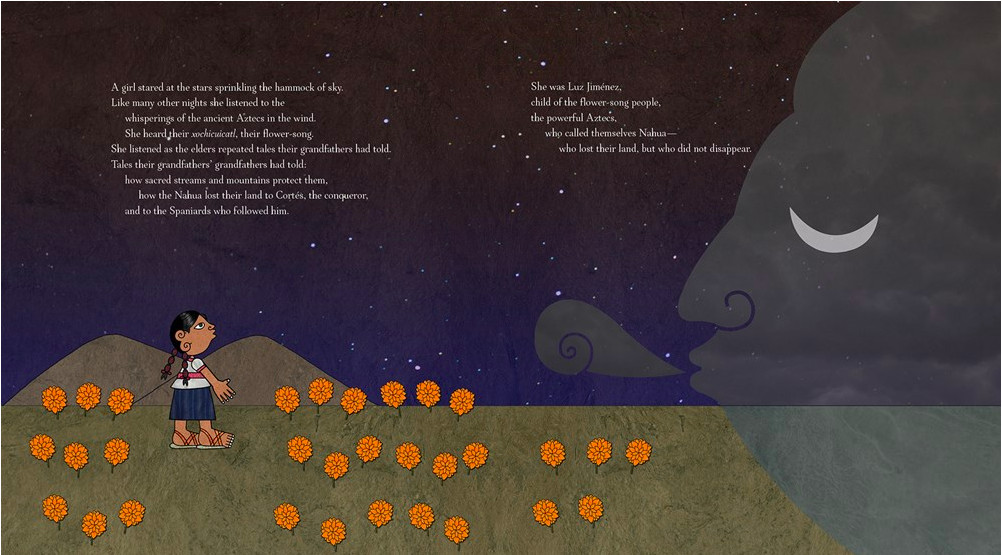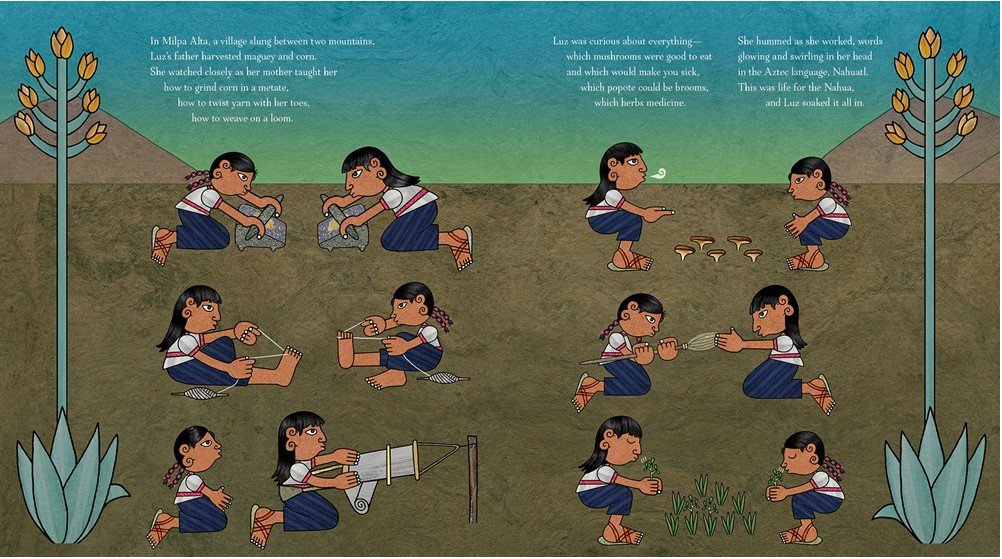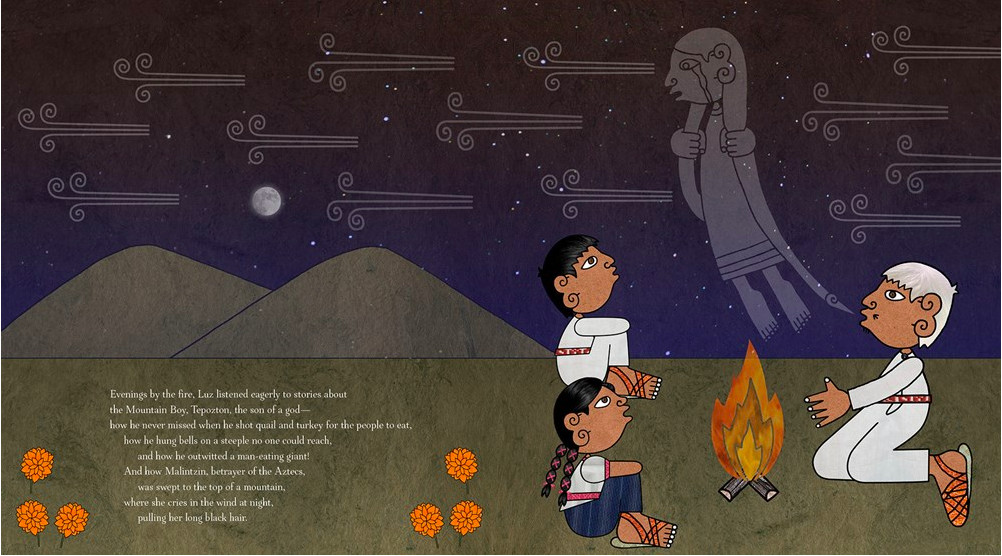When considering the enduring impact of colonialism on indigenous populations worldwide, it’s a testament to the strength and resilience of these cultures that so many have survived. Stories like that of Luz Jiménez, as beautifully told in “Child of the Flower-Song People,” offer a profound insight into how cultural knowledge persists through dedicated individuals who champion its preservation and dissemination.
Luz Jiménez embodies this spirit.

Image alt text: Poetic excerpt from “Child of the Flower-Song People” book, introducing the concept of xochicuicatl, the Nahua flower song tradition.
Gloria Amescua’s narrative, brought to life with Duncan Tonatiuh’s distinctive illustrations, introduces us to Luz as a young girl deeply connected to her Nahua heritage. The book opens with evocative lines that immediately immerse the reader in the heart of this culture:
A girl stared at the stars sprinkling the hammock of the sky.
Like many other nights she listened to the
whisperings of ancient Aztecs in the wind.
She learned their xochicuicatl (shos-chee-KWEE-kah-tul), their Flower Song….
She was Luz Jiménez,
child of the flower-song people,
the powerful Aztecs,
who called themselves Nahua—
who lost their land, but who did not disappear.
This lyrical passage sets the stage for a journey into the world of “flower song,” or xochicuicatl in Nahuatl, the language of the Nahua people. Flower song is more than just music; it’s a form of poetry, a way of expressing deep emotions, history, and cultural understanding. It’s the lifeblood of Nahua tradition, passed down through generations. The book beautifully captures Luz’s early immersion in these traditions.

Image alt text: Illustration from “Child of the Flower-Song People” depicting young Luz Jiménez attentively listening to stories, embodying the oral tradition of Nahua culture.
We see Luz absorbing the stories and traditions of her people, her aspirations to become a teacher within her community shining brightly. However, life takes an unexpected turn. Forced to navigate assimilation and displacement during the Mexican Revolution, Luz’s path shifts. She finds herself posing for prominent artists like Diego Rivera and Fernando Leal. These artists, unlike the dominant culture, were drawn to and respected her indigenous heritage.

Image alt text: Book illustration from “Child of the Flower-Song People” showing Luz Jiménez in a classroom, reflecting her initial dreams of teaching and cultural preservation.
In an extraordinary twist, Luz becomes a different kind of teacher. She bridges the gap between the past and the present, becoming a living embodiment of Nahua culture for anthropologists and artists. She ensured that the flower song, the language, and the stories of her ancestors continued to resonate, defying those who sought to erase her heritage.
Amescua’s writing is truly lyrical, weaving the “flower song” metaphor throughout the narrative. This extended metaphor creates powerful imagery, beautifully complemented and amplified by Tonatiuh’s distinctive illustrations. His art style visually evokes a sense of cultural reclamation, adding another layer of poetic depth to the text and the underlying flower song of the Nahua people. The recurring motifs of breath, life, and flowers in the illustrations reinforce the themes of resilience and cultural continuity. The synergy between text and art is seamless and deeply moving.
“Child of the Flower-Song People” is not just a biography; it’s a celebration of cultural endurance, the power of storytelling, and the profound impact of one woman’s life. It’s a vital read for understanding indigenous history and appreciating the beauty and strength of traditions like the flower song.
Engage with the Story:
Reflect on your own family’s culture and heritage. What stories, traditions, or objects represent your cultural background? Consider creating a “culture box” to represent your own unique story. Explore additional resources related to the book and Nahua culture on Gloria Amescua’s website for educators.
Consider pairing “Child of the Flower-Song People” with Duncan Tonatiuh’s “Separate is Never Equal” to explore themes of culture, identity, and resilience across different narratives.
Book Details:
Title: Child of the Flower-Song People: Luz Jiménez, Daughter of the Nahua
Author: Gloria Amescua
Illustrator: Duncan Tonatiuh
Publisher: Abrams Books for Young Readers, 2021
Ages: Elementary School+
Themes: Aztec (Nahua) culture, poetry, resistance to oppression, cultural preservation.
Discover more exceptional picture book recommendations at Susanna Hill’s website. This review is also featured on Twinkl’s list of best children’s books of 2021.

